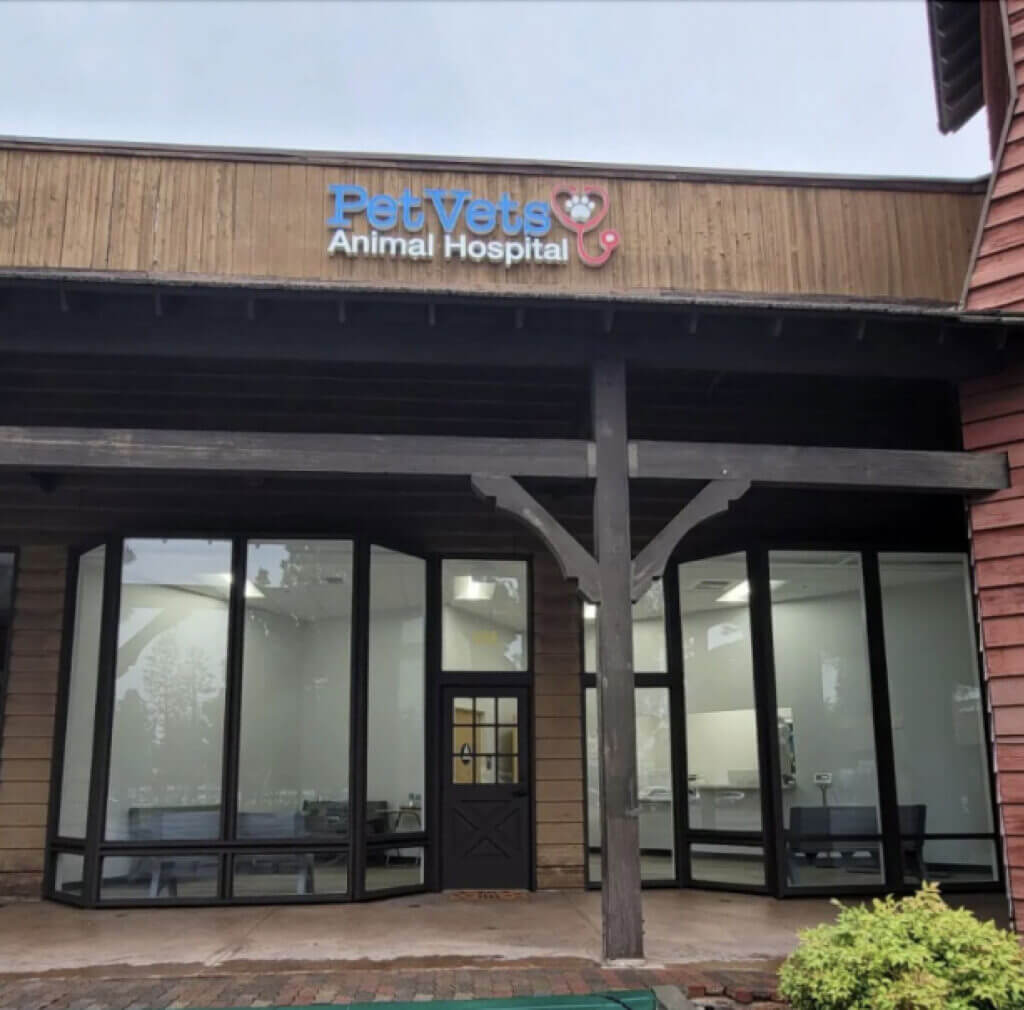Dog Hip Dysplasia Treatment
in San Dimas, CA
Hip dysplasia is a common orthopedic condition in dogs, especially in larger breeds, where the hip joint doesn’t develop properly, leading to instability and degeneration. This article aims to shed light on the clinical signs, treatment options, and recovery process for dogs diagnosed with hip dysplasia.
What Are the Clinical Signs of Hip Dysplasia in Dogs?
Hip dysplasia often manifests in various symptoms that can affect a dog’s mobility and overall well-being. Common signs include:
- Difficulty in Rising: Dogs with hip dysplasia may struggle to stand up or have a stiff gait, especially after rest.
- Lameness: They may exhibit lameness, favoring one hind limb over the other.
- Decreased Activity: Dogs may become less active, reluctant to engage in physical activities such as running or playing.
- Pain: Pain in the hip area is common, particularly during movement or palpation.
- Muscle Atrophy: Over time, affected muscles may weaken and atrophy due to reduced use and chronic discomfort.
Treatment of Hip Dysplasia With FHO
Femoral head ostectomy (FHO) is a surgical procedure often recommended for treating hip dysplasia, especially in cases where other interventions like medications or physical therapy fail to provide adequate relief. Here’s an overview of the FHO technique and its benefits:
- Surgical Procedure: During FHO, the surgeon removes the head of the femur, which is the ball-shaped top of the thigh bone, from the hip joint.
- Creating a False Joint: By removing the femoral head, the surgeon eliminates the bone-on-bone contact responsible for pain and discomfort. Over time, scar tissue forms, creating a “false joint” that provides stability and improved mobility.
- Pain Relief: FHO aims to alleviate pain and improve the dog’s quality of life by restoring function to the hip joint.
- Suitability: FHO is often recommended for dogs with severe hip dysplasia or those who are not good candidates for total hip replacement due to factors such as age, size, or concurrent health issues.
Recovery From FHO Surgery
The recovery period following FHO surgery is crucial for ensuring a successful outcome. Here’s what pet owners can expect during this phase:
- Postoperative Care: Dogs will require strict confinement and limited activity during the initial weeks following surgery to allow for proper healing.
- Physical Rehabilitation: Physical therapy exercises, such as passive range of motion exercises and controlled walking, help promote muscle strength and joint flexibility.
- Pain Management: Veterinarians may prescribe pain medications to manage discomfort during the recovery period.
- Gradual Return to Activity: As the dog’s condition improves, activity levels can be gradually increased under the guidance of the veterinarian or a qualified rehabilitation specialist.
- Monitoring Progress: Regular follow-up appointments with the veterinarian are essential to monitor the dog’s progress and address any concerns or complications promptly.
Dog Hip Dysplasia Treatment at PetVets Animal Hospital
Hip dysplasia can significantly impact a dog’s mobility and comfort. However, with early detection, appropriate treatment options such as FHO surgery, and diligent postoperative care, affected dogs can experience improved mobility and enjoy a better quality of life. If you suspect your dog may be suffering from hip dysplasia, consult with your veterinarian for proper diagnosis and treatment recommendations.
Frequently Asked Questions About Hip Dysplagia in Dogs
-
Is hip dysplasia preventable?
While genetic predisposition plays a significant role in hip dysplasia, maintaining a healthy weight and providing appropriate exercise can help reduce the risk of development.
-
At what age does hip dysplasia typically occur?
Symptoms of hip dysplasia can manifest as early as a few months old, but they may become more apparent as the dog ages and the condition progresses.
-
Can hip dysplasia be managed without surgery?
In mild cases, management strategies such as weight management, exercise modification, and pain medications may help alleviate symptoms. However, severe cases often require surgical intervention for long-term relief.
-
How long does it take for a dog to recover from FHO surgery?
The recovery period can vary depending on factors such as the dog’s age, overall health, and the extent of the surgery. In general, dogs may start showing improvement within a few weeks post-surgery, but full recovery may take several months.
-
Will my dog be able to lead a normal life after FHO surgery?
With proper rehabilitation and postoperative care, many dogs can lead active and fulfilling lives following FHO surgery. While they may have some limitations, such as avoiding high-impact activities, they can still enjoy a good quality of life.

